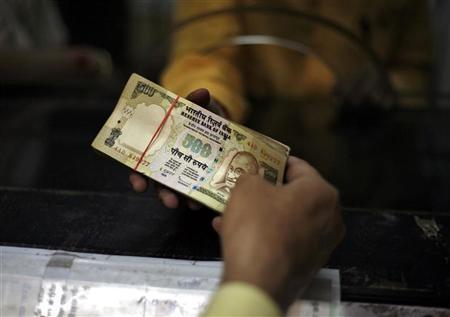
If you fancy a debate on India growth story, the best place to start would be the September '12 quarter results. There is a bit for everybody in the profit and loss numbers for India's top listed firms.
Net profit growth is at its highest level in the last six quarters, margins are up and sectors such as cement, pharmaceuticals, FMCG, non-banking financial services and private sector banks reported better-than- expected numbers. What else can a bull demand as a Diwali gift?
But dig dipper and a different picture emerges. At 9.2 per cent, the year-on-year growth in core revenues is at its lowest in the last three years and it's still trending down. Adjusted for inflation, it indicates virtually no volume growth for mainline companies.
The upside in profitability has come from lower input cost such as raw materials and power and fuel, lower interest rates and an absence of forex losses in this quarter.
The analysis excludes companies from banking, financial services and oil & gas sectors. Our analysis is based on numbers for 1,566 companies whose results were available for 16 consecutive quarters. The universe includes 22 out of 30 Sensex companies and 32 out of 50 Nifty companies. (...

Some analysts find this trend discomforting. "It's difficult to sustain higher margins without volume growth. Topline should move in tandem with the profits for the latter to be sustainable," says Dhananjay Sinha, co-head institutional equity at Emkay Global Financial Services.
According to his estimates, the topline growth is even worse for small and mid-size companies (ex-Nifty) at 7.2 per cent.
"This indicates that the volumes for smaller companies are actually shrinking which is a bad indicator for future," he says. He doesn't foresee any immediate triggers to growth and expects more pain for India Inc in the forthcoming quarters. (...

According to analysts, demand growth will become even more challenging in the forthcoming quarters once the government starts cutting back on expenditure in its bid to bring down fiscal deficit.
At around 30 per cent of India's gross domestic product, the government is the biggest consumer and investor in the economy.
Its effect is likely to felt the most in rural demand where government pumps in money through various schemes such as rural employment guarantee schemes, food and fertilizer subsidy and rural development schemes.
"With revenue growth falling below projection, the government has no option but to either raise taxes or cut expenditure to fill the fiscal gap. This will hit demand growth across sectors," says Sinha.
The gross direct tax collections grew by 6 per cent in the first six months of the current financial year against the budgeted 20 per cent growth.
In FY12, direct taxes (corporate taxes plus income taxes) accounted for 55 per cent of the government's total tax revenues of little over 900,000 crore (Rs 9 trillion).
There is little chance of tax buoyancy during the second half of the current fiscal given tepid corporate profitability and stagnating personal income due to a poor job market.
...

Cut in public expenditure could worsen the outlook for FMCG companies, which have so far remained resilient during the economic slowdown.
The first sign of stress was clearly visible in the results of Hindustan Unilever, which reported lower-than-expected growth in volumes during the September quarter.
Companies making discretionary consumer goods such as paints, consumer durables and automobiles are already facing tepid demand growth.
Analysts don't expect any quick turnaround in the corporate investment cycle given the poor earning visibility in most capex heavy sectors such as metals, auto, oil & gas and capital goods.
"These sectors were expected to underperform and their results have been along expected lines. And given global economic uncertainty, their outlook remains challenging," says Ajay Bodke, head - investment strategy and advisory at Prabhudas Lilladher.
...

Others say that there is no compulsion for even financially well-placed companies to increases capex given the slower demand growth in India.
"Companies scale up their capacity either because they are making good profit or if they foresee strong demand growth in the future. None of this is applicable right now," says Sinha.
Things could however change for India if the global commodity prices cool off or if there is a sharp fall in oil prices.
India is one of the world's largest crude oil importer and higher fuel prices acts as a tax on consumer and producer, besides leading to higher fiscal and trade deficit. This is, however, beyond the control of policy makers in New Delhi.
"That may happen if global investors turn risk averse and the world's leading central bankers turn hawkish in their monetary policy," says Sinha.
"The next best scenario is to drift along till the next general election in 2014," says a senior analyst on the condition on anonymity.